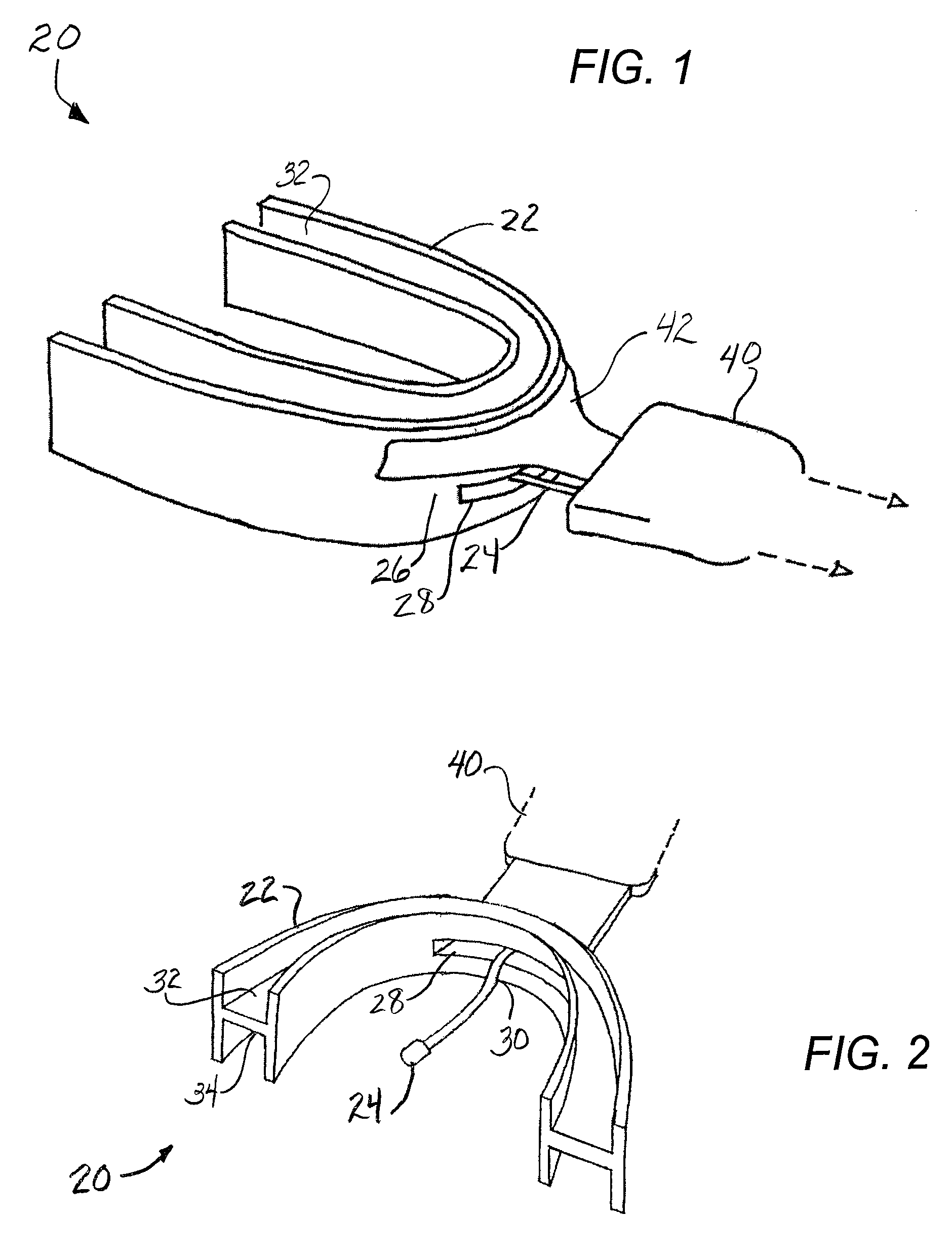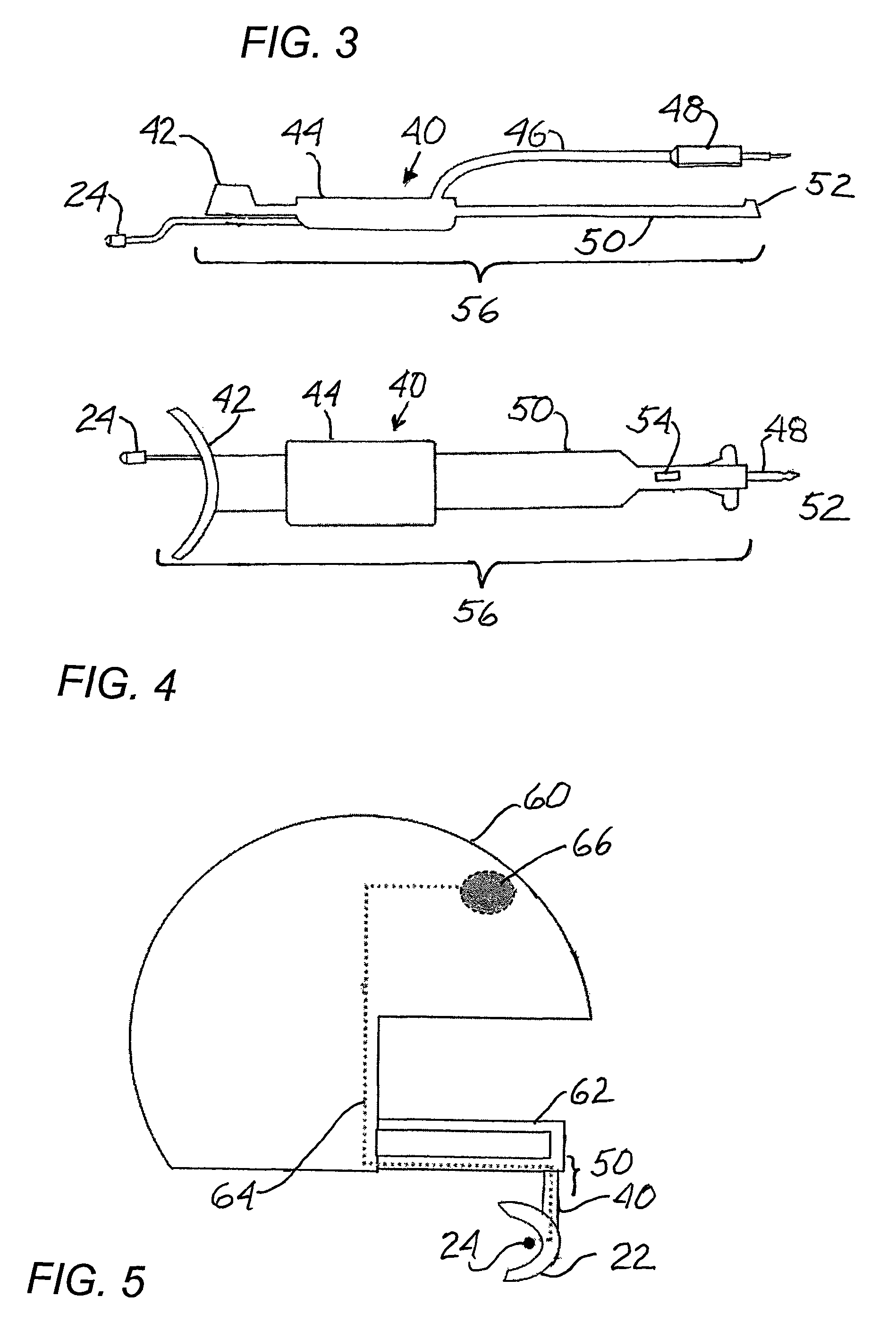Vital signs monitoring using personal protective equipment
a technology of vital signs and protective equipment, applied in the field of vital signs monitoring using personal protective equipment, can solve the problems of physical harm, physical harm, and space between the wearer's head and the outer shell, and achieve the effect of avoiding physical harm, avoiding physical harm, and avoiding physical harm
- Summary
- Abstract
- Description
- Claims
- Application Information
AI Technical Summary
Benefits of technology
Problems solved by technology
Method used
Image
Examples
Embodiment Construction
[0032]Referring now in more detail to the exemplary drawings for purposes of illustrating embodiments of the invention, wherein like reference numerals designate corresponding or like elements among the several views, there is shown in FIGS. 1 and 2 a vital signs monitoring system 20 mounted in personal protective equipment (PPE), in this case a mouth guard 22. In this embodiment, a thermal sensor 24 is positioned through an aperture 28 the front edge 26 of the mouth guard. The thermal sensor is curved 30 downward so that it will be positioned under the wearer's tongue when the mouth guard is in place. This will cause the thermal probe to come into contact with the internal oral tissue of the wearer to provide temperature data about the oral cavity of the person wearing the mouth guard. In this case the mouth guard 22 has been formed with an upper channel 32 and a lower channel 34 to accept both the wearer's upper row of teeth and lower row of teeth, respectively.
[0033]The mouth gua...
PUM
 Login to View More
Login to View More Abstract
Description
Claims
Application Information
 Login to View More
Login to View More - R&D
- Intellectual Property
- Life Sciences
- Materials
- Tech Scout
- Unparalleled Data Quality
- Higher Quality Content
- 60% Fewer Hallucinations
Browse by: Latest US Patents, China's latest patents, Technical Efficacy Thesaurus, Application Domain, Technology Topic, Popular Technical Reports.
© 2025 PatSnap. All rights reserved.Legal|Privacy policy|Modern Slavery Act Transparency Statement|Sitemap|About US| Contact US: help@patsnap.com



